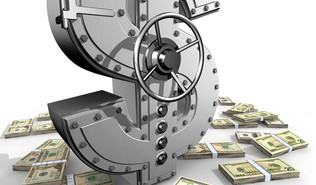After announcing the first tapering of bond buys in a manner that was not disruptive, the best strategy from here is to do it little and often, says Simon Smith of FxPro.
In the interview below, Smith also discusses the Japanese government’s campaign for wage increases and its impact, the interesting macro divergence in the South Pacific and more.
Update: Taper 2: Fed announces $10 billion taper – USD advances
Simon has over seventeen years experience of macro forecasting and investment strategy research. Prior to joining FxPro in May 2010, Simon was a consultant with Thomson Reuters, having spent four years as Chief Economist at Weavering Capital. He has held economic and strategy positions with Standard & Poor’s, together with consultancy firms 4Cast and MMS International. Simon holds an MSc. in Economics from the University of London and a BSc. from Brunel University.

- Is the Fed likely to taper bond buys once again in January?
I think so and by a similar amount to December. They have been preparing the ground for tapering for months and managed to do it in December in a way that did not prove disruptive for markets. As such, the best strategy from here is little and often. The data has gone their way and even though the employment report may have been disappointing on a headline basis, the underlying momentum in the economy remains firm. We are now looking at 3%+ annualised growth in the final quarter. In the early days, it was looking like just over 2% as inventories corrected from the Q3 surge. It would be more problematic and disruptive for market if they were not to taper, leading us back into a “will they, won’t they” debate for the next meeting.
- Japanese PM Abe is trying to encourage firms to raise wages. If he succeeds, could Japan have the “right type of inflation”?
There have already been some signs of wage growth. The type needed in Japan is real wage growth that comes from both rising nominal wages and inflation, not flat nominal wages and negative inflation (which has been what we’ve seen in the past). This way, there is a chance of escaping the deflationary trap that has beset Japan for most of the past 20 years, but firms don’t want to raise their cost base if they cannot recover this through a combination of productivity gains and price increases that are going to stick and not undermine their business. It’s as just as much a psychological problem as an economic one. I am not sure we are there yet, but 2014 remains the best shot that the current government will get at achieving it, which is why Abe is pushing firms along this line.
- The Canadian dollar recently reached 4 year lows against the US dollar. Can the drop of the loonie lift inflation in Canada, making the central bank more hawkish?
I think the opposite is the risk. In two years, we’ve seen US exports of crude and petroleum to Canada double in value terms. That’s a huge shift as the US becomes less dependent on overseas imports for energy. But this naturally threatens Canada’s ability to piggy-back off the better US growth outlook but exporting energy products to its biggest trading partner. So the risks on the loonie are for more weakness near-term and leading to a sustained push above the 1.10 level on USDCAD.
- According to recent PMIs, the French economy isn’t going in the right direction. Can French weakness have a significant impact on the next ECB decision? Or is the disinflation / deflation question much higher on the agenda of the central bank?
It won’t have a significant impact for the reasons that the ECB sets policy for the Eurozone as a whole. And as the last rate cut showed, the transmission mechanism it pretty broken in the Eurozone and the ECB has been pretty clear to government that they have to do their bit and can’t look to monetary policy to solve all the underlying problems. Naturally, Hollande has tried to take a more business friendly approach (even though his friendliness towards the opposite sex has taken over as the main issue), but as Japan and numerous other countries have shown, you can’t transform an economy overnight.
- The RBNZ signalled a possibility of rate hikes in 2014. Can we see it as early as the first quarter?
I think there is a decent chance we do after the stronger CPI data we’ve just seen. This will move the interest rate differential vs. the AUD positive for the first time since early 2009. Naturally, a fair deal of this has already been anticipated on AUDNZD, but it does remain one of the few crosses in the developed world where the potential or actual policy divergence on rates still exists. It’s difficult to play these trends via those central banks undertaking non-conventional measures, so further downside on the cross should still be seen, with scope to party toward the end of Q1.
Further reading: Stronger dollar in 2014, but gains could be limited
